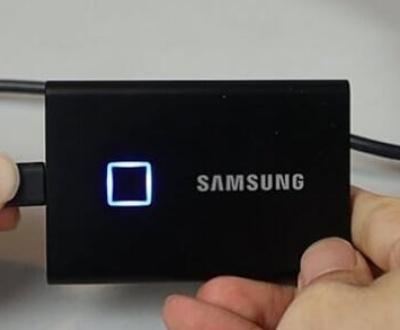SD (Secure Digital) cards are compact storage devices used widely in various electronics like cameras, smartphones, tablets, and computers. Over time, however, these devices may experience data corruption or physical damage, leading to lost files or an inability to access data. In such cases, an SD card repair utility becomes a crucial tool in recovering and repairing the device, allowing users to retrieve lost files or restore the card to full functionality.
Corruption due to improper ejection: Removing an SD card from a device while files are still being written or read can lead to corruption.
Physical damage: SD cards can suffer from physical damage like bent connectors or broken components due to mishandling.

File system errors: If the SD card’s file system becomes corrupted, data on the card may become unreadable.
Virus or malware infections: These can alter or delete files, rendering the SD card unreadable.
Bad sectors: These are areas on the SD card that have become faulty, often due to wear and tear or manufacturing defects.
Power surges: Sudden power outages or surges can disrupt the data-writing process, leading to file corruption.
Device malfunctions: Sometimes, the device used with the SD card (e.g., camera, smartphone, etc.) may malfunction, corrupting the card in the process.
With a better understanding of why SD cards fail, we can now explore how SD card repair utilities function.
What is an SD Card Repair Utility?
An SD card repair utility is software designed to help users recover or repair corrupted or damaged SD cards. These utilities offer various functions, including:
Repairing corrupted files: The utility can identify and fix errors in the SD card’s file system or corrupted files, enabling users to access their data again.
Recovering lost data: If files are lost due to accidental deletion or corruption, a repair utility can recover and restore them, even if they were permanently deleted or lost in a system crash.
Formatting the SD card: In some cases, the SD card may need to be reformatted to restore functionality, which the utility can handle.
Scanning for bad sectors: These tools often scan the SD card for physical or logical errors and bad sectors that may be preventing proper operation.
There are many utilities available for SD card repair, some free and others paid, offering different levels of repair capabilities.
Popular SD Card Repair Utilities
Panda Assistant also offers a feature for partition recovery. In cases where partitions are accidentally deleted or lost due to system crashes, the software can restore them, bringing back access to valuable data. This is especially useful for those who have lost large amounts of data in a partition without realizing the significance of the data stored within it.
The software’s deep scan mode ensures thorough searching of every sector of the storage device, which increases the chances of recovering lost data, even if the file system is severely damaged. While a quick scan is sufficient for recovering recently deleted files, the deep scan mode digs deeper to find files that may have been overwritten or hidden due to formatting errors.
How SD Card Repair Utilities Work
SD card repair utilities typically follow a few core processes when diagnosing and fixing issues:
Scanning the SD Card: The utility begins by scanning the SD card for errors, corrupt files, or damaged sectors. The scan may take some time depending on the size of the SD card and the extent of the damage.
Identifying Corruption or File System Errors: If file system corruption is found, the utility may attempt to repair it by reconstructing lost or damaged directories and file structures.
Recovering Lost Files: If the SD card was accidentally formatted or files were deleted, the utility will search for traces of these files in unallocated space and attempt to recover them.
Bad Sector Repair: Some utilities can mark bad sectors (if any are found) and make them inaccessible to prevent future data corruption.
Formatting: In severe cases, the SD card may need to be completely formatted. This clears all data from the card, essentially resetting it to factory settings. Once formatted, the SD card can be used again, although all existing files will be lost.
Using SD Card Repair Utilities: A Step-by-Step Guide
Choose the Right Utility: Depending on the type of issue your SD card is facing, select a repair utility that best suits your needs. Free utilities like Recuva may be sufficient for basic recovery, while more advanced tools like EaseUS may be needed for severe corruption or physical damage.
Install and Launch the Utility: Download the selected SD card repair utility and install it on your computer. Once installed, open the program and ensure your SD card is properly connected to the computer.
Scan for Errors: Most utilities begin with an option to scan the SD card for errors. Select the appropriate drive corresponding to your SD card and initiate the scan. This may take anywhere from a few minutes to several hours, depending on the size of the card and the extent of the issues.
Analyze the Results: After the scan is complete, the utility will display a report with its findings, such as file system errors, lost files, or bad sectors. Review this information to decide which actions to take.
Repair or Recover Files: If the utility identifies corrupted or lost files, it will usually offer options to repair or recover them. For files that are recoverable, the utility will attempt to restore them to a location on your computer.
Address File System Errors: If the SD card has a corrupted file system, the utility may offer an option to fix these issues. The repair tool will attempt to rebuild the file system, making the SD card accessible again.
Bad Sector Check: If bad sectors are found, the utility may give the option to mark these sectors as unusable, thus preventing future data loss. In some cases, the utility may allow you to attempt to move data from these bad sectors to healthy portions of the card.
Format the SD Card: If the utility cannot repair the SD card or if the corruption is too severe, formatting the card may be the best option. Remember, formatting erases all data on the card, so be sure to recover any important files before proceeding.
Test the Card: After completing the repair process, remove and reinsert the SD card into the device to ensure it’s working properly. Test if it can be accessed without errors, and check that files can be written and read successfully.
Tips for Preventing SD Card Damage
While repair utilities can be incredibly helpful, prevention is always better than cure. Here are some tips to keep your SD cards in good working condition:
Properly eject the SD card: Always use the “Safely Remove Hardware” option on your computer or device before removing the SD card. This ensures that no data is being written when you remove it.
Avoid physical damage: Handle SD cards with care. Keep them in protective cases to prevent bending, breaking, or contact with moisture.
Use high-quality SD cards: Purchase SD cards from reputable manufacturers, as they tend to be more reliable and durable.
Regularly back up your data: To minimize the risk of data loss, regularly back up important files from your SD card to other storage devices.
Avoid excessive formatting: Frequently formatting an SD card can reduce its lifespan. Only format when necessary.
About us and this blog
Panda Assistant is built on the latest data recovery algorithms, ensuring that no file is too damaged, too lost, or too corrupted to be recovered.
Request a free quote
We believe that data recovery shouldn’t be a daunting task. That’s why we’ve designed Panda Assistant to be as easy to use as it is powerful. With a few clicks, you can initiate a scan, preview recoverable files, and restore your data all within a matter of minutes.
Subscribe to our newsletter!
More from our blog
See all postsRecent Posts
- How to recover deleted voicemail samsung? 2025-04-22
- Samsung portable ssd t5 online recovery 2025-04-22
- Fix western digital external hard drive 2025-04-22

 Try lt Free
Try lt Free Recovery success rate of up to
Recovery success rate of up to









